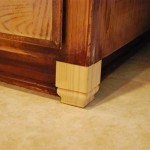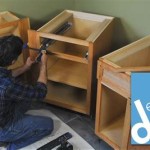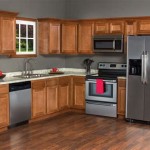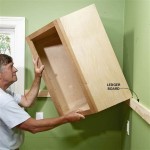Organise My Kitchen Cupboards: A Comprehensive Guide
A well-organised kitchen is more than just aesthetically pleasing; it enhances efficiency, reduces stress, and minimizes food waste. The heart of this organised space lies within the kitchen cupboards. Efficiently arranged cupboards allow for easy access to ingredients and tools, making cooking a more enjoyable and less frantic experience. This article delves into the strategies and techniques required to effectively organise kitchen cupboards, transforming them from cluttered chaos into functional storage spaces.
Assessing and Planning the Cupboard Organisation
Before embarking on the physical act of organising, a thorough assessment of the current state of the cupboards is crucial. This initial step involves a comprehensive review of the items stored, their frequency of use, and the current layout of the cupboard space. This assessment provides a foundation for informed decision-making regarding storage solutions and organisation strategies. The assessment aims to identify underutilised space, duplicated items, and items that no longer serve a purpose.
One key aspect of assessment is categorisation. Grouping similar items together – such as baking supplies, spices, or canned goods – simplifies the organisation process. This allows for logical placement of these categories within the cupboards based on accessibility and frequency of use. For instance, frequently used items should be placed at eye level and within easy reach, while less frequently used items can be stored on higher shelves or in less accessible locations.
Planning logically follows the assessment stage. The planning phase focuses on developing a storage strategy that addresses the identified challenges and optimises available space. This might involve measuring the dimensions of the cupboards to determine the appropriate sizes of containers, shelves, or other organisational tools. Consider the vertical space within each cupboard. Installing adjustable shelves can significantly increase storage capacity and allow for customisation based on the size of stored items.
Furthermore, planning should incorporate a system for maintaining organisation. This might include labeling containers, implementing a “first-in, first-out” system for food items, and scheduling regular decluttering sessions to prevent buildup of unnecessary items. A proactive approach to maintenance is essential for preserving the initial organisation efforts.
The Decluttering Process: Purging Unnecessary Items
The decluttering stage is a fundamental step in organising kitchen cupboards. This involves systematically removing items that are no longer needed, expired, or duplicated. This process not only frees up valuable space but also simplifies the task of organising the remaining items. It is crucial to be ruthless in the decluttering process, focusing on functionality and utility rather than sentimentality.
A common method for decluttering is to empty each cupboard completely. This allows for a clear view of the available space and facilitates a more objective evaluation of each item. As items are removed, they should be sorted into distinct categories: items to keep, items to donate or sell, and items to discard. Items to keep should be further categorised based on their intended storage location within the cupboard.
Expired food items are prime candidates for disposal. Check expiration dates meticulously and dispose of any items that are past their prime. Consider implementing a system for tracking expiration dates in the future to prevent future buildup of expired goods. Unused kitchen gadgets or appliances should also be evaluated critically. If an item has not been used in several months or years, it is likely not essential and can be donated or sold.
Duplicated items can also consume valuable space. Consolidate multiple containers of the same ingredient into a single container, or donate any duplicate kitchen tools that are not frequently used. This rationalisation process is essential for maximizing space and minimizing clutter. The decluttering process should not be viewed as a one-time event but rather as an ongoing practice that is integrated into the routine of kitchen maintenance.
Implementing Effective Storage Solutions
Once the assessment, planning, and decluttering processes are complete, the focus shifts to implementing effective storage solutions. This involves selecting and utilising appropriate storage containers, shelving systems, and organisational tools to maximise space and enhance accessibility. The choice of storage solutions should be tailored to the specific needs and dimensions of the kitchen cupboards.
Clear, airtight containers are highly recommended for storing dry goods such as flour, sugar, pasta, and cereal. These containers not only protect food from moisture and pests but also allow for easy visibility of contents. Labeling these containers with the name of the item and the expiration date further enhances organisation and prevents confusion. Stacking containers can also save valuable shelf space and create a more visually appealing arrangement.
Adjustable shelving systems are particularly useful for customising cupboard space to accommodate items of varying heights. Adjustable shelves allow for efficient utilisation of vertical space, preventing wasted space above or below items. Consider installing pull-out shelves or drawers to improve accessibility to items stored in deep cupboards. These pull-out systems eliminate the need to reach into the back of the cupboard, making it easier to retrieve items.
Specialised organisers, such as spice racks, pot and pan organisers, and lid organisers, can further enhance cupboard organisation. Spice racks provide a convenient and space-saving solution for storing spices, while pot and pan organisers prevent pots and pans from becoming a tangled mess. Lid organisers keep lids neatly stacked and easily accessible. By utilising these specialised organisers, it is possible to create a highly functional and efficient kitchen cupboard system.
Maximising Space and Accessibility
The ultimate goal of organising kitchen cupboards is to maximise space and improve accessibility to stored items. This requires strategic placement of items based on frequency of use, category, and size. Implementing strategies that optimise vertical space and minimise wasted space is paramount to achieving this goal.
Frequently used items should be stored at eye level and within easy reach. This ensures that these items are readily accessible when needed, without requiring excessive bending or reaching. Less frequently used items can be stored on higher shelves or in less accessible locations. Consider using step stools or reaching tools to access items stored on high shelves.
Grouping similar items together by category simplifies the task of locating specific items. This could involve dedicating a specific shelf or section of the cupboard to baking supplies, spices, or canned goods. Labeling shelves or sections can further enhance organisation and prevent confusion. A clear labeling system ensures that items are consistently returned to their designated location.
Utilising the inside of cupboard doors for storage can also significantly increase space. Adhesive hooks or small shelves can be attached to the inside of cupboard doors to store items such as measuring cups, small utensils, or cleaning supplies. This frees up valuable shelf space and provides a convenient location for frequently used items. Ensure that items stored on the inside of cupboard doors do not obstruct the closing of the door or interfere with items stored on the shelves.
Maintaining Organisation: A Long-Term Strategy
Organising kitchen cupboards is not a one-time task but rather an ongoing process that requires consistent maintenance. Implementing a long-term strategy for maintaining organisation is essential for preventing a return to clutter and chaos. This strategy should include regular decluttering sessions, a system for tracking expiration dates, and a commitment to returning items to their designated locations.
Regular decluttering sessions, ideally scheduled on a monthly or quarterly basis, help to prevent the buildup of unnecessary items. During these sessions, expired food items should be discarded, unused kitchen gadgets should be donated or sold, and duplicate items should be consolidated. This proactive approach to decluttering ensures that the cupboards remain organised and efficient.
Implementing a system for tracking expiration dates is crucial for minimising food waste and preventing the consumption of expired products. This could involve using a whiteboard or a digital spreadsheet to record expiration dates of perishable items. Regularly checking expiration dates and rotating stock on a “first-in, first-out” basis ensures that older items are used before they expire.
A key element of maintaining organisation is a commitment to returning items to their designated locations after use. This requires a conscious effort to avoid simply placing items wherever there is available space. By consistently returning items to their designated locations, it is possible to maintain a highly organised and efficient kitchen cupboard system. This habit, when ingrained, prevents the slow creep of clutter that undermines initial organisational efforts.

Organise Your Messy Kitchen Cupboards Drawers In 8 Steps

This Is How To Organise Your Kitchen Cupboards Plastic Box

How To Organize Your Kitchen Cabinets And Pantry Feed Me Phoebe

How To Organise Kitchen Cabinets The Organised Housewife

40 Best Ideas For How To Organize Kitchen Cabinets

This Is How To Organise Your Kitchen Cupboards Plastic Box

Expert Tips On How To Organise Your Kitchen Cupboards The Mail

How To Organize Kitchen Cabinets Clean And Scentsible

How To Organize Your Kitchen Cabinets Step By Project The Container

60 Clever Cabinet Organization Tips To Double Your Storage 2024
Related Posts








